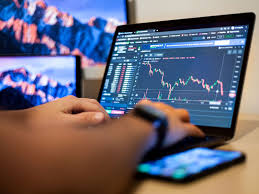Understanding How Leverage Works with Your Forex Broker
Leverage is undoubtedly one of the most powerful tools you can use as a forex trader. It allows you to trade large positions in the market with a much smaller capital, which can maximize your gains and amplify your losses. However, leverage is also a double-edged sword, and understanding how it works is crucial to your success in trading.
In this article, we will dive into the world of leverage and explore how it works with your forex broker. We will discuss the benefits and risks associated with leverage, the different levels of leverage available in the forex market, and the role your forex broker plays in determining your leverage. By the end of this article, you will have a better understanding of how to use leverage strategically and the precautions you should take.
What is leverage?
In forex trading, leverage is the amount of money that your forex broker lends you to trade with. Essentially, it allows you to trade much larger positions than you would normally be able to with your own funds. Leverage is expressed as a ratio, such as 1:50 or 1:500, where the number before the colon represents your trading capital, and the number after the colon represents the amount of money you can trade with.
For example, if you have a leverage of 1:100 and you deposit $1,000 into your trading account, your broker will lend you an additional $99,000 to trade with. This means you can control a position worth $100,000.
What are the benefits of leverage?
The main benefit of leverage is that it allows you to make more money with less capital. This means that you can potentially earn much higher returns than you would if you were trading with your own funds. For example, if you were to make a profit of 1% on a $10,000 trade with no leverage, you would make a profit of $100. However, if you were to make the same profit on a $100,000 trade with a leverage of 1:10, you would make a profit of $1,000.
What are the risks of leverage?
The downside of leverage is that it can also amplify your losses. If you are trading with a leverage of 1:100 and the market moves against you by 1%, you will lose all of your capital. This means that you need to be very careful when using leverage and always use it responsibly.
Different levels of leverage in forex trading
Different forex brokers offer different levels of leverage to their clients. The amount of leverage available will depend on the broker and the type of trading account you have. Generally, brokers will offer leverage levels ranging from 1:50 to 1:500.
The higher the level of leverage, the more money you can trade with, but also the more risk you are taking. It is important to choose a leverage level that suits your trading strategy and risk tolerance.
The role of your forex broker in determining your leverage
Your forex broker plays a crucial role in determining your leverage. Different brokers will have different leverages available, and it is important to choose a broker that offers a leverage level that suits your trading needs.
Additionally, the amount of leverage your broker offers will depend on the regulatory environment in the country where they are based. For example, brokers based in Europe are subject to regulations that limit their leverage levels to 1:30 for major currency pairs, while brokers based in other countries may offer higher leverage levels.
Conclusion:
Leverage is a powerful tool that can help maximize your returns in forex trading. However, it is important to use leverage responsibly and choose a leverage level that suits your trading strategy and risk tolerance. Your forex broker plays a crucial role in determining your leverage, so it is important to choose a broker that offers a leverage level that suits your needs. By understanding how leverage works and using it strategically, you can make the most of your forex trading experience.


